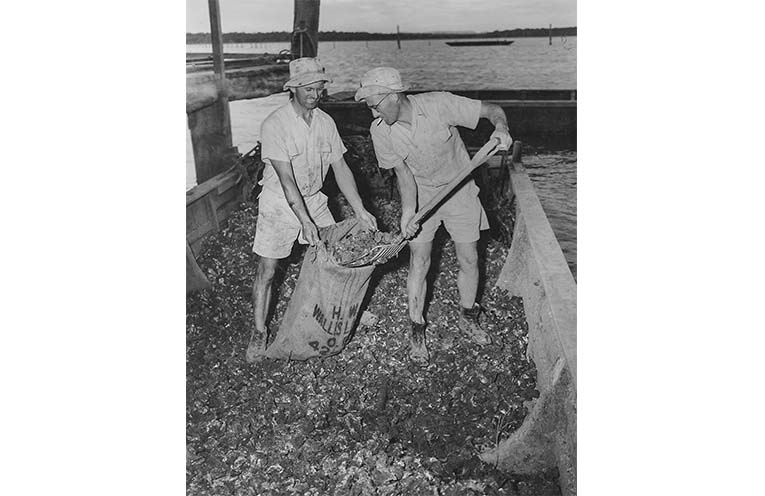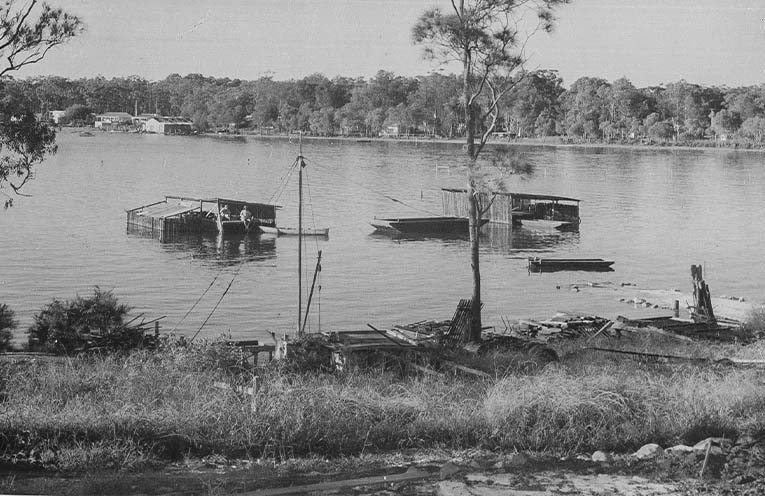
DUTCH oystermen have contributed significantly to the local Port Stephens industry.
The Second World War had a massive impact particularly in Europe and led to a wave of migration of a war-torn population seeking a better life in another country.
Many eyes focused on Australia as the land of opportunity.
It was the Dutch connection that brought Jozias ‘Sos’ de Koeyer to Australia and eventually to Swan Bay (Pipeclay Creek).
Back in Holland both the de Koeyer and Salm families were heavily involved in the oyster industry where they were well known and respected as they are to this day.
Adrian Salm, who was well established working for the Phillips family in Swan Bay, returned to Holland after seven years working on oyster farms in Australia.
He knew the de Koeyers well and arrived at their home in Yerseke for a cup of coffee and to reacquaint with the family. Adrian stayed into the night telling the family that there was plenty of work available in the oyster industry in Port Stephens. Young son, Sos de Koeyer, was “all ears”.
Sos was working on mussels and oysters in Holland for his father and grandfather and had gathered valuable experience. Back in the 1950s the Dutch Government was encouraging emigration and was paying 50 percent of the trip if you stayed for a minimum of three years.
“Why don’t I go and have a look?” thought Sos.
A few blocks away in the same town of Yerseke another young family was having similar thoughts.
John Padmos was the son of a successful oyster and mussel grower.
Word had spread through the village that John Padmos was considering migrating.
Adrian convinced John to move to Australia, where they worked together until 1984 in the Port Stephens oyster industry.
Friends for life.
In September 1957, nineteen-year-old Sos de Koeyer flew from Amsterdam to Sydney, finally arriving at Oyster Cove, Port Stephens where accommodation had been arranged for him by Stan Phillips.
“My wages started off with £12/10/0 at Oyster Cove,” Sos said.
“I only came with £25 in my pocket which was the minimum amount that you were permitted to land with in Australia – any less and you would be picked up as a vagrant.”
Working and saving in 1959, Sos gathered enough money to buy a DKW 250 motorbike from Hazel and Moore in Hunter Street, brand new, for £300.
Oddly enough later in 1959 Sos purchased a block of land on the waterfront at Tanilba Bay for £175.
Cheaper than his motorbike!
In 1960 Sos moved out of Oyster Cove and in with Jim Brown who owned the boat shed in Tanilba Bay, where they built and hired rowing boats.
After a couple of years Sos moved in with Jacky and Mrs Gale, much to the relief of Jim Brown, who had tired of Sos’ continuous attempts to learn to play the piano accordion.
Sos lived with the Gales until he married in 1964.
Among his fondest memories of living with the Gales were of the lunches that were packed daily for him by Mrs Gale – two freshly caught blue swimmer crabs, a home grown tomato and a slice of bread.
Sos de Koeyer’s first boat purchased in 1960 cost $150 – the ‘Pumpkin’, built in England of New Zealand kauri and originally designed as a tender for a sea going ship driven by a 10-12 Simplex with forward and reverse gear box.
The boat was previously owned by a school teacher at Bobs Farm and was left sinking in the mud in Tilligerry Creek.
With the help of oyster farmer John Browne the boat was lifted from the mud and with some work ‘Pumpkin’ was back on the water.
Taking every opportunity to expand his growing interests Sos knew a good deal when he saw it.
“There was a big vacant oyster lease about 300 yards long adjacent to the houses in North Arm Cove,” Sos said.
“I learnt this when I was working for the Phillips in Sydney.
“On my return to Port Stephens I rode my motorbike to the Fisheries offices in Tea Gardens and Karuah in an attempt to purchase the lease which turned out to be a deceased estate.”
In 1961 Sos bought the lease which produced beautiful oysters in ideal growing conditions for £200.
In 1962 Sos purchased a catching lease at Corlette and a growing lease in North Arm Cove off Claude Johnson who had the boat shed in Karuah.
He put out 2000 sawn sticks to start with in North Arm Cove and over the next two and a half years a beautiful crop of oysters was coming on when disaster hit.
Winter mortality ruined all but a few.
“I must do the best I can with these few oysters that have survived,” he said.
The young oysterman set up a bench in a shed, an old toilet, that he had bought for £10 from Newcastle and started opening the oysters that remained.
Sos purchased second hand bottles from the bottle yard in Hunter Street, and washed them in a bathtub with the chip heater boiling the water.
Then he would put the bottles of oysters in the saddle bags of his motorbike and head off on Thursdays – pay day – to the Sea Breeze Hotel in Nelson Bay.
He would sell the bottles alongside the fishermen, including the Asquiths, who were selling their lobsters.
The customers had one request.
“We would buy more if they were bottled in salt water,” they asked.
Everyone knows that oysters swell in fresh water and are far bigger and more attractive to the buyer; in salt water they shrink. It also takes less oysters to fill a bottle if they are sold in fresh water.
However the customers in Nelson Bay preferred the taste of their oysters in salt water.
Sos had the solution to the problem, he bottled the oysters in fresh water and on his way to Nelson Bay he stopped his bike at Mambo Creek and replaced the fresh water with salt water.
This process did not give the oysters time to shrink before they were bought.
Sos sold big, fat, salty oysters and the patrons couldn’t get enough of them.
Through the week Sos continued to work for the Phillips family and each Saturday he worked the Salm – Padmos leases in Tanilba Bay, culling oysters on the beach.
It was there that he noticed a “wonderful girl” regularly walking along the beach.
Kay McInerny was her name.
After a nervous introduction Sos “made her talk”.
“We got acquainted,” he said.
He learnt that the young lady’s family had a dry cleaning agency in the general store and post office in King Albert Avenue, Tanilba Bay.
“I finished up having a lot of dry cleaning.”
An 1964 at the age of 21, Kay and Sos were married in the Baptist Church in Wallsend.
By John ‘Stinker’ CLARKE
